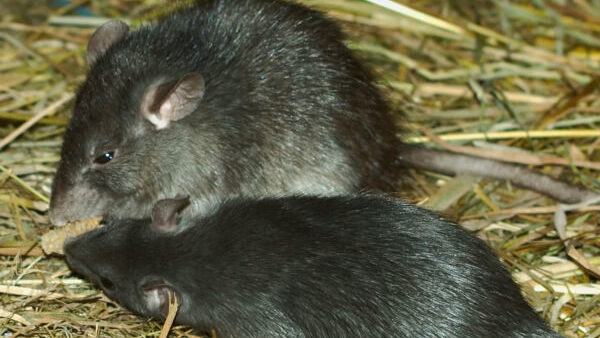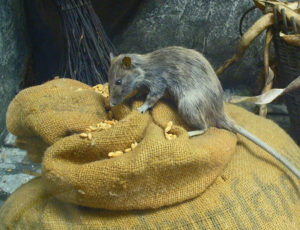Rats are, perhaps, the ultimate invader – with a little bit of help through the centuries from humans. Where-ever we go they go too, so that ship rats have ended up on some of the remotest of the world’s islands.

Today’s research review looks at studies into rats on islands, aspects of rat biology that make them particularly successful colonisers and what happens to islands once rats are removed.
First a study that looks into the intimate biology of rats – the promiscuity of their parentage and implications for genetic diversity if just one pregnant female colonises a new habitat. Researchers Carolyn King (University of Waikato), Tim Winstanley (Landcare Research, Auckland), John Innes (Landcare Research, Hamilton) and Dianne Gleeson (University of Canberra) looked at the genetic makeup of the embryos carried by 17 pregnant female ship rats collected from eight forest fragments trapped to extinction in rural Waikato.

The researchers matched 12 fathers with 24 embryos (34% of offspring) and showed that many littermates had different fathers. Another 55 embryos were not conclusively matched to any of the male rats whose genotype was known.
Specifically, “six of the 12 fathers had contributed to only one litter each, whereas three were represented in three litters each and three in two litters”. According to the researchers, “multiple paternities were the norm: only one complete litter could be attributed to a single father, and all others had between two and four fathers.”
This research has implications for the control of rats in that the high degree of genetic diversity within a single litter means that a single pregnant female invading a previously rat-free habitat “could establish a new population with substantial genetic variation from the first generation”.
The full research report is published in the New Zealand Journal of Ecology and freely available: Multiple paternity and differential male breeding success in wild ship rats (Rattus rattus) (2014)
An island has been invaded by predators, damage has been done, the ecosystem has changed and now the predators have been removed – a happy ending or just the beginning? Can the island now be left to recuperate and recover naturally or is further intervention necessary to facilitate the healing process?
Deciding when to lend a helping hand was the subject of a recent research paper by Rachel Buxton (University of Otago), Christopher Jones (Landcare Research, Lincoln), Philip O’Brien Lyver (Landcare Research, Lincoln), David Towns (Auckland University of Technology and DOC) and Stephanie Borrelle (Auckland University of Technology). Passive recovery was defined by the researchers as: “where no further intervention occurs and the island is assumed to recover naturally”, while active recovery was defined as: “where recovery of key taxa (e.g. seabirds) is enhanced by manipulating movement and demography.”
With a growing number of New Zealand islands now freed from invasive predators, the researchers argue that it is now feasible to carry out a retrospective analysis of the responses of various species and island ecologies to both passive and active recovery regimes. Using a seabird island restoration as their model, they describe a decision-making framework for deciding whether to adopt a passive or active approach in an island restoration project.
“Using a comparative analysis of petrel response to past predator eradications we built a conceptual model of petrel recovery dynamics and defined key site and species characteristics for use in a stepwise decision tree to select between active or passive seabird population management.”
The authors’ criteria for intervening in an active restoration on a seabird island are: “when seabird populations are absent or declining; and on islands with no nearby source colony, small remnant colonies, highly altered habitat with shallow soil and slopes, and with competitive species pairs.”
This paper is published in ‘Biodiversity and Conservation’ and can be purchased at: Deciding when to lend a helping hand: a decision-making framework for seabird island restoration (2016
Your island or sanctuary is rat-free, but still that happy ending is elusive. A rat or rats has reinvaded. Your detection system has alerted you to the incursion – but how do you determine which of several potential locations is the source of the invasion? Solve this problem and you can potentially stop the invaders at source, rather than relying on detecting and eliminating them after they arrive.
This was the scenario posed in a recent research project by Alysha Bagasra, Helen Nathan and James Russell (University of Auckland) and Mark Mitchell (Biosecurity, Auckland Council). They used a biomarker Rhodamine B to detect ship rats from Great Barrier Island which had crossed to two nearby islands.
Rat eradications had previously been attempted at these islands, but reinvasion rates were high. The subsequent presence of the Rhodamine B marker in rats on both islands confirmed that Great Barrier Island was a source of recolonisation.
By confirming the source sites of the reinvasion, additional rat control at these sources was possible. The authors conclude that: “Chemical markers provide a cost-effective tool to label individuals and determine point sources of origin, most powerfully in situations where dispersal is happening over a scale of weeks.”
This research is published in the NZ Journal of Ecology and is freely available at: Tracking invasive rat movements with a systemic biomarker (2016)

